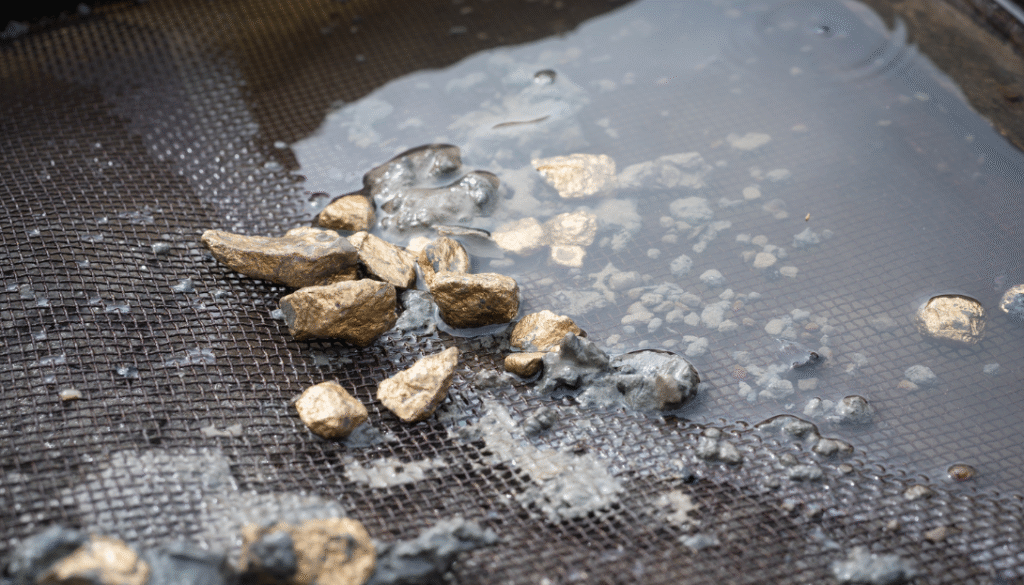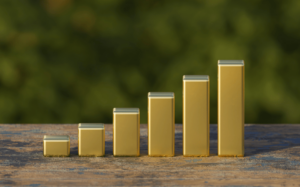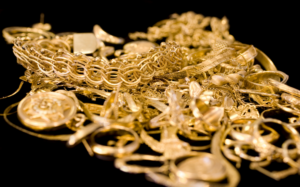For thousands of years, gold has always held a special position in human civilization. This precious metal is not only a symbol of luxury and power but also an investment instrument considered the safest throughout history. Its stable value keeps gold relevant even as times change.
However, behind its shine, there is another story that is rarely discussed whenever we talk about gold. Such as the environmental footprint of every gram of gold we own, including the connection between gold and the environment. Could digital gold be a more sustainable alternative as well as a solution to protect the earth? Let’s explore the answers.
Why Is Gold Always Considered Special?
For thousands of years, gold has always received a special place in human civilization. This precious metal has been a symbol of power, valuable jewelry, and even a global monetary standard. In many cultures, gold also symbolizes eternity and prosperity. This historical value makes gold remain relevant to this day.
It is no wonder that until now, gold is still regarded as the safest and most prestigious investment instrument. Beyond its symbolic and economic value, its production process also carries environmental stories. A social footprint is also attached to every gram of gold we use. Understanding this fact is important before investing.
Gold is obtained in a special way, through a complex process involving many aspects. From mining activities to refining, large energy and resources are used. The impact can be felt on ecosystems and communities around the mines. Understanding this helps us enjoy the value of gold more wisely.
Is Gold Production Difficult?
Did you know, only to produce 1 gram of gold in 2019, emissions amounted to 0.028 tons of CO₂? This amount is equivalent to the emissions from a gas-fueled car traveling from Indonesia to the United States. This data shows how large the carbon footprint left behind is. Gold is not merely shiny, but also carries ecological consequences.
Open-pit mines have higher greenhouse gas emission intensity compared to underground mines. The decline in gold content in ore even increases emission intensity by 32-50%. Mining processes also require large amounts of energy. Moreover, the use of hazardous chemicals makes the impact more complex.
Mercury waste that is not well managed can contaminate soil and water around the mines. Accumulation in aquatic ecosystems risks damaging the food chain and human health. Nonetheless, pollution can be minimized with proper management. Environmentally friendly programs become solutions to reduce excessive impacts.
The Environment Behind Gold’s Shine
The impact of gold mining becomes clearer when looking at deforestation issues. Indonesia, as one of the world’s largest gold producers, recorded the loss of around 490 thousand hectares of forest annually between 2000 and 2015. This figure is not just a statistical data point; it reflects the loss of natural habitats that are crucial to ecosystem survival.
Global gold production reaches around 3,000 metric tons per year, with China, Russia, and Australia as the largest producers. The gold extraction ratio has also increased in some major mines worldwide. Now, one ton of ore can yield an average of 0.8 grams of gold. Previously, it could produce 3-4 grams per ton of processed ore.
This data reveals a major challenge concerning the efficiency of available natural resources. Mining processes are increasingly energy-intensive and generate more waste. Therefore, more responsible gold production strategies are needed. The goal is to reduce negative impacts without diminishing the economic value generated.
The gold shine we wear carries a long story about ecosystems, forests, and wildlife habitats. However, this fact also opens new opportunities that can be utilized. Sustainable innovations and solutions continue to develop to reduce environmental impacts. Thus, gold can retain its value without sacrificing the earth’s future.
Efforts to Reduce Impact: From the World to Indonesia
Global environmental awareness has spurred various green initiatives. One of them in Indonesia is Treasury’s Green Gold program. The concept is simple but impactful, namely for every gram of gold purchased, a tree is planted. In this way, gold investment is not just about value, but also real action to protect the earth.
On average, one tree can absorb 10–30 kg of CO₂ per year, helping reduce the carbon footprint from mining activities. So far, more than 42 thousand investors have contributed through this program. Green Gold’s collective funds support reforestation and rehabilitation of degraded lands. This program also plays a role in restoring local ecosystems affected.
Treasury collaborates with Jejak.in to ensure every contribution is recorded transparently and accountably. Since its launch in April 2024 through monitoring to October, Green Gold has been consistently implemented. This commitment shows that gold investment can be managed more sustainably. Such transparency fosters investor trust.
These steps show that gold investment is not only about financial gain. It can also be a means to support environmental sustainability in the long term. With Green Gold, every gram of gold provides a positive impact on the earth. This awareness is crucial for preserving ecosystems and building a greener future.
Positive Socioeconomic Impact of Green Gold
Besides ecological benefits, Green Gold delivers positive socioeconomic impact. The program opens local job opportunities in tree planting, land maintenance, and ecosystem monitoring activities. Communities around mining areas gain extra income and education related to sustainable environmental management.
Investing in gold through Green Gold also helps strengthen local economies and provides legal and sustainable alternative activities, thus reducing potential social conflicts that often arise from illegal mining activities. This shows how gold can be an economic value as well as a means of social-ecological transformation.
What Can We Learn from the “Other Side” of Gold?
From these facts, it is clear that gold is not solely about prestige or economic value. There are ecological and social responsibilities attached to every gram of gold. Programs like Green Gold teach that investment can be done sustainably while supporting the earth’s preservation.
Today, there are more ways to enjoy gold’s value without neglecting the environment. One is through digital gold investment at Treasury, which presents the Green Gold concept transparently and accessibly. This program provides convenience for anyone who wants to invest. The gold’s value remains secure, while also bringing benefits to nature’s preservation.
With every gram of gold purchased, investors contribute to tree planting and ecosystem restoration. This means investment is not just securing financial value for the future. Beyond that, every transaction carries a message of environmental care. From these small steps, a greener earth’s future can be realized together.
Gold today is not only about luxury. It is also about new awareness: how gold’s shine can reflect a greener future. With small steps such as choosing environmentally friendly digital investments, gold not only stores value but also hope for us and future generations.











